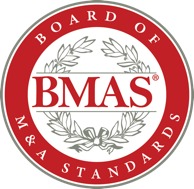The Importance of M&A Program Management
By Ellen Owens, VP of Global PMO at Avnet and a member of the Board of M&A Standards
Over the last 10 years, I have competed in at least 50 triathlons ranging from short sprint distances to one Ironman – the pinnacle of my triathlon journey. I do this for fun, to stay motivated and to prove to myself that you can do just about anything if you commit to it and develop a discipline around it.
M&A, achieving synergy targets and getting the most from the deal also requires a clear process that drives responsibility and accountability across the company. A well-structured M&A program can establish the process, drive accountability and track success.
Program vs. Project
It is important to distinguish the difference between an M&A program and a single acquisition and integration, which is better defined as a project. An acquisition and integration project should have a defined start and end date; have a clear purpose; and produce results. An M&A program is an ongoing business process that defines how the acquisition and integration projects will be run. The program may also train integration teams, track success of integrations and conduct audits to ensure that all transactions are regulatory compliant.
We aren’t that acquisitive – why do we need a program?
Back to my original analogy: if you are only going to do one triathlon a year, are you willing to risk injury or feeling miserable at the end for a chance of maybe getting lucky and win? All are possibilities, but I would rather have confidence going into the race. Having trained and prepared, I can trust that the race will simply executing the plan.
Smaller companies or less frequent acquirers may designate a person or another division to be responsible for maintaining the M&A program. A good place to maintain the program might be within your project management organization or even your legal department. It may also make financial sense to contract with a firm that can be contracted to manage transactions, which are then governed by their M&A programs.
Reflect, revise, results
When I first started triathlons, I struggled with open water swimming. A 1,000-meter swim quickly turned into a 1,500-meter swim because I had not fully grasped the fine art of “sighting.” It wasn’t until someone forced me to identify one thing that I could focus on and do better the next time, that I really start to improve.
Making the case for establishing and resourcing an M&A program for your type and size of an organization is about driving deal results. It is a well-known fact that acquisitions are high risk but can be high reward if done right. Tracking results of transactions, conducting lessons learned and re-assessing the processes are key functions of the M&A program that demonstrate value. Without a central area of responsibility for this function, it is often missed or put on the back burner.
The Finish Line
Accountability starts at the top so a regular report on transaction progress and performance should be reviewed on a regular basis depending on the number of deals you are doing a year. M&A program management is a key aspect of successful organizations. This, paired with a well-defined process, can make the difference between hitting your synergy goals and losing share-holder confidence in your ability to grow the organization.
 About Ellen Owens:
About Ellen Owens:
Ellen Owens will be a guest presenter at The Art of M&A Program Management in Scottsdale, May 2019. She is the Director of Business Transformation at Avnet, a global electronics company with abilities that can support customer from concept through creation and design to distribution. In her current role, Ellen leads highly collaborative global business transformation initiatives that result in growth opportunities, cost savings, and process efficiencies. Most notably, Ellen served as the global lead for the divestiture of a significant portion of the Avnet business in 2016-17.

